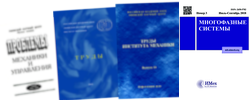

The investigation of the sound wave scattering phenomenon on small-sized inhomogeneities is important both for studying the fundamental nature of this phenomenon and from a practical point of view, since many applications of acoustic waves are based on scattering phenomenon, such as sonar, sounding of the atmosphere and ocean, nondestructive testing devices, creation of a positioned 3D sound, etc. In many systems under consideration, obstacles are spherical (or can be considered as such). Present review is devoted to the analysis of the main works on theoretical methods for solving problems of acoustic wave scattering on spheres and determining the main characteristics of this phenomenon, as well as on existing experimental works. Two theoretical approaches to solving the presented problem can be distinguished. In the first approach, it is assumed that the distribution of scatterers is random, and the average value of the scattered field is calculated. In the second approach, which is given the main attention in this paper, the solution is reduced to large system of integral or linear algebraic equations using various methods, such as the T-matrix method, addition theorems for spherical functions, Green’s functions, integral equations. The first approach allows one to consider systems with a large number of randomly distributed particles, however, due to the averaging of the sound field, it is impossible to determine the pressure at a specific point in space. The second approach makes it possible to determine the zones of increasing and decreasing pressure, however, for a large number of spheres, the solution requires significant computing resources and processor time. The analysis of scientific papers that define the main characteristics of the scattering phenomenon, such as the total or back scattering cross-section, has shown that analytical formulas and numerical studies are limited to the cases of a single sphere or systems with two spheres. Thus the problem of determining the formulae for these characteristics in the general case remains unsolved and is relevant.
acoustic scattering,
soundproof sphere,
sound-permeable sphere,
sound field,
total scattering cross-section,
theoretical methods,
experiment
The investigation of the sound wave scattering phenomenon on small-sized inhomogeneities is important both for studying the fundamental nature of this phenomenon and from a practical point of view, since many applications of acoustic waves are based on scattering phenomenon, such as sonar, sounding of the atmosphere and ocean, non-destructive testing devices, creation of a positioned 3D sound, etc. The particles are spherical or can be considered as such in many systems under research, therefore, one of the relevant subproblems is the study of scattering on spheres sets (solid spheres or spherical bubbles and droplets) under various external influences. Present review is devoted to the analysis of the main works on theoretical methods for solving problems of acoustic wave scattering on spheres and determining the main characteristics of this phenomenon, as well as on existing experimental works. The main purpose of present paper is to review the works that go beyond the classical formulations.
Two theoretical approaches to solving the presented problem can be distinguished. In the first approach, it is assumed that the distribution of scatterers is random, and the average value of the scattered field is calculated. In the second approach, which is given the main attention in this paper, the solution is reduced to large system of integral or linear algebraic equations using various methods, such as the T-matrix method, addition theorems for spherical functions, Green's functions, integral equations. The first approach allows one to consider systems with a large number of randomly distributed particles, however, due to the averaging of the sound field, it is impossible to determine the pressure at a specific point in space. The second approach makes it possible to determine the zones of increasing and decreasing pressure, however, for a large number of spheres, the solution requires significant computing resources and processor time. In the frame of the second approach, an algorithm for constructing a computational experiment based on the fast multipole method is proposed and adapted to the problems of acoustic scattering from a set of spheres for soundproof and sound-permeable spheres. This numerical technique ensures high accuracy of the results of computational experiments with minimal CPU time.
In the numerical realization of the solution obtained by the multipole reexpantion method, the question arises of the correct choice of the truncate number of the obtained series, since with a small number of terms, the accuracy of calculations will be low, and with a large one, not only the accuracy will increase, but also the amount of memory required for calculation, as well as machine time. Therefore, the analysis of papers with various approaches to determining the truncation number are presented.
The analysis of scientific papers that define the main characteristics of the scattering phenomenon, such as the total scattering or backscattering cross-section, has shown that analytical formulas and numerical studies are limited to the cases of a single sphere or systems with two spheres.
Value of the present work is following. It is established that the problem of determining, in the general case, the expression for the main characteristics of the wave scattering phenomenon for systems consisting of many spheres in various configurations is currently not solved and remains relevant.